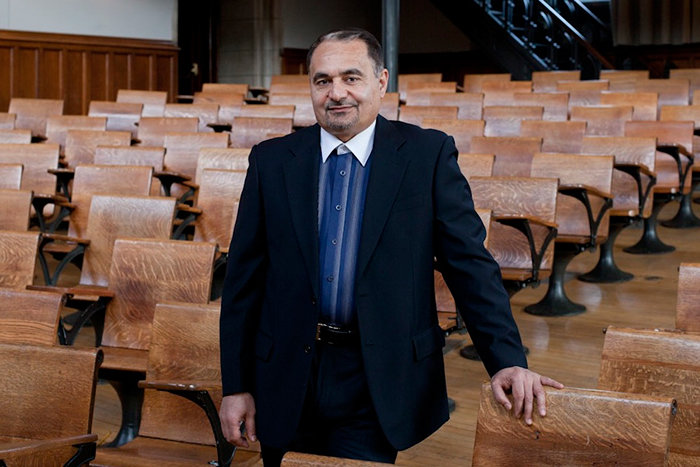Resolving the Afghanistan crisis

The U.S.-led war in Afghanistan has not only continued unabated for over 15 years, making it America’s longest war, but has no end in sight.
Since their 2001 overthrow of the Taliban government, America and its allies have more than struggled to put the country back together. By early 2017, the situation had deteriorated to such an extent that the Afghan central government exercised control over just 52 percent of the country, with a resurgent Taliban and now even ISIS dominating the rest of the war-torn country. The depth of Afghanistan’s vulnerability was demonstrated on Saturday, when the Taliban launched their deadliest attack ever on an Afghan military base, killing more than 140 unarmed soldiers and injuring over 60 and leading Afghan President Ashraf Ghani to declare a national day of mourning. More than 6,700 Afghani security forces were killed in just 2016 — about three times American casualties for the war.
While former President Obama opted for a “surge” of U.S. troops in his first term — with numbers reaching a peak of around 100,000 — his attempt at a military solution to the conflict proved unviable and by the end of his presidency U.S. troop numbers had dwindled to roughly 9,000. Rather than attempt a new strategy centered on inclusive diplomatic solutions, the Trump administration has seemingly opted for renewed military escalation. Trump National Security Adviser H.R. McMaster traveled to Afghanistan shortly after the “mother of all bombs” was dropped to deliver assurances of increased U.S. military support to the Afghan government.
Now is the time for global and regional powers to implement a comprehensive plan for peace in Afghanistan. “Everywhere you look, if there is trouble inside the region you find Iran,” U.S. Secretary of Defense James Mattis recently declared. However, he should not forget that the chief reason for the successful 2001 overthrow of the Taliban was largely due to Iranian cooperation. At the time, in response, Iran was slapped with the “axis of evil” designation and the U.S. sought to marginalize it from Afghanistan, which only served to contribute to the country’s deteriorating situation.
While Mr. Mattis traveled to Kabul this week to discuss America’s new strategy in Afghanistan, however, a lasting peace in Afghanistan can be reached if regional and global powers abide by the following 10 principles:
• Afghanistan should not be a proxy battleground for outside powers. For its part, the Afghan government must maintain a balance in its foreign relations.
• Extremism and violence in Afghanistan, both indigenous and foreign-inspired, foreign-supported, must be viewed as the main threat to the country’s stability, and the Afghan government must be strongly supported in confronting terrorism.
• The Ashraf Ghani-Abdullah Abdullah unity government in Afghanistan must be upheld and political differences prevented from intensifying. Outside powers can play a critical mediation role, and promote reconciliation and national dialogue.
• Geopolitical tensions between Pakistan, India and Afghanistan must be addressed by the international community. The India-Pakistan rivalry and dispute over Kashmir has long spilled over into Afghanistan, where the two South Asian powers have vied for influence. In December 2016, Afghan President Ghani accused Pakistan of waging an “undeclared war” against Afghanistan and giving sanctuary to the Taliban.
• Afghanistan’s drug and corruption challenges, which have served to stifle the creation of a strong state, must be seriously confronted. In 2016, the amount of bribes in Afghanistan astonishingly surpassed the Afghan government’s revenue estimates. Poppy cultivation and opium production also rose in 2016 by 10 percent and 43 percent, respectively.
• For many neighboring countries, Afghanistan is a water reservoir. Afghanistan’s water resources and infrastructure must be developed in a way so that the water shares of its neighbors are not diminished. Effective water-sharing policies will be indispensable to ensuring future peace and stability in the region.
• Afghanistan’s economic development should be viewed in a positive-sum way by neighboring countries, and efforts to make Afghanistan an economic hub connecting South Asia and Eurasia must be realized. One major initiative in line with this vision is the trilateral agreement between Afghanistan, India and Iran on the development of the Iranian port of Chahbahar, which will give Afghanistan access to world markets via the Gulf of Oman.
• Humanitarian assistance to Afghanistan must be maintained. For decades, Afghanistan was the world’s largest source of refugees, with Iran and Pakistan hosting 95 percent of them as of 2013. Iran alone has long hosted an Afghan refugee population numbering more than 3 million. A major voluntary repatriation and reintegration strategy is necessary in regards to the Afghan refugee crisis, with efforts focused on overcoming the challenges of reintegration.
• Any sustainable solution to the Afghan crisis must bring peace, comfort and dignity to the Afghan people. As such, the end state to the crisis cannot include the continued presence of foreign troops.
• Instead of different countries taking measures by themselves or forming different coalitions, there should be a cohesive, synchronized international approach on assistance to Afghanistan. The U.N. can act as the vehicle to coordinate outside efforts to enact positive change in Afghanistan.
One potential overarching formula to address the Afghanistan crisis is through a major regional and global diplomatic initiative that includes the Afghan government and regional stakeholders in Afghanistan, namely India, Pakistan and Iran, along with the five permanent members of the U.N. Security Council. This diplomatic process should be aimed at addressing the root causes of the conflict, not just its byproducts of combating specific insurgent groups, and resolve the underlying contentions between the main warring parties. Peace in Afghanistan requires regional and global buy-in, not more bombs.
• Seyed Hossein Mousavian is a Middle East security and nuclear policy specialist at Princeton University, a former Iranian diplomat and author of “Iran and the United States: An Insider’s view on the Failed Past and the Road to Peace” (Bloomsbury Academic, 2015).

Leave a Comment